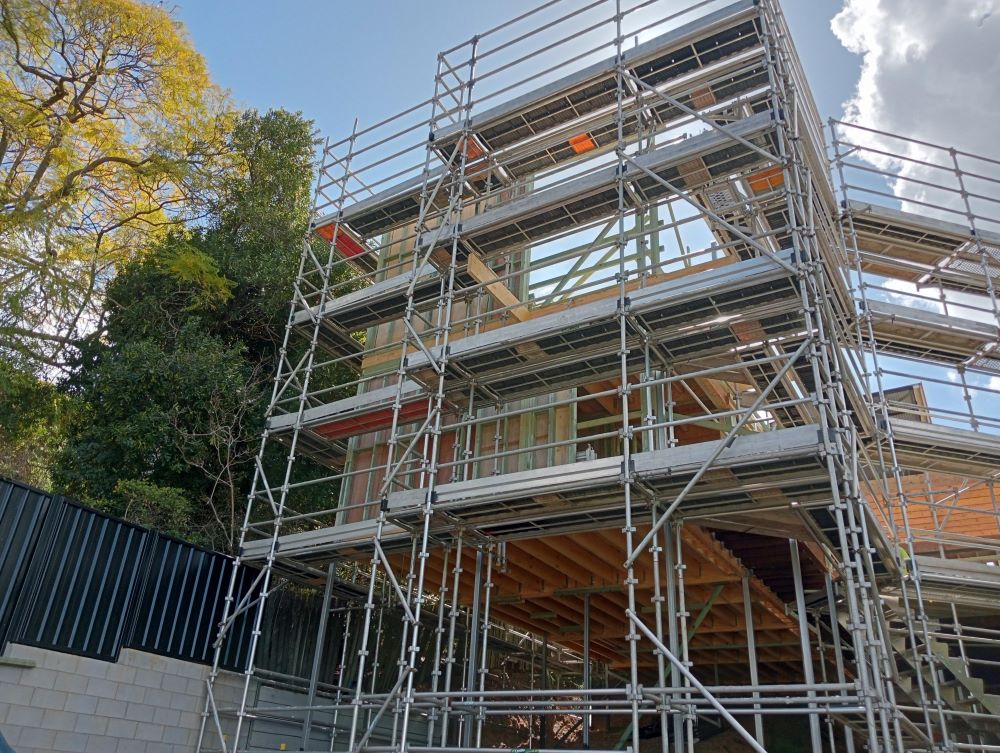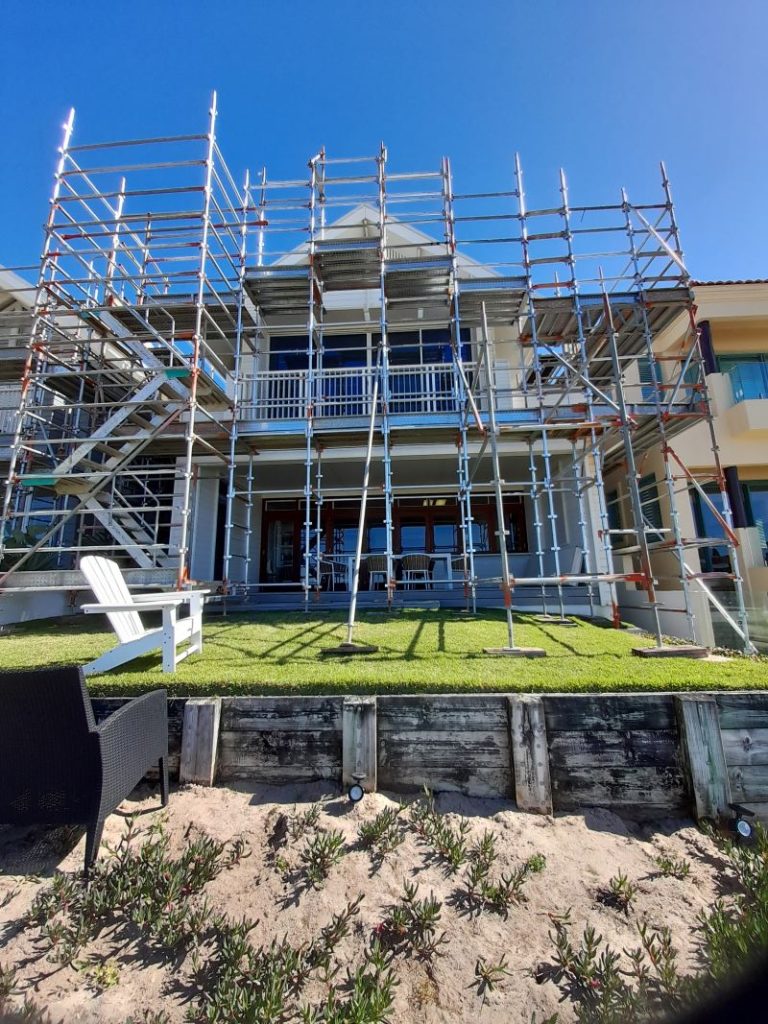Ultimate Decision-Making Guide: Comparing Aluminium and Steel Scaffolding for Construction Projects
Selecting the appropriate scaffold for your construction or renovation endeavor is essential for maximizing safety and boosting operational efficiency. The two primary options available are aluminium scaffolding and steel scaffolding. Each material possesses distinct characteristics, benefits, and suitability for various project requirements. This comprehensive guide will delve into a detailed comparison of these two prevalent scaffolding types, showcasing their features, advantages, and ideal applications. It aims to help you choose the best scaffold that fits your specific needs, ensuring a successful outcome for your construction projects.
When assessing scaffold options, it’s vital to grasp the unique benefits and features of aluminium versus steel scaffolding. We will meticulously explore these attributes to equip you with the knowledge required to make an informed decision that aligns with the specific demands of your project, ultimately enhancing the safety and efficiency of your construction operations.

Leverage the Advantages of Aluminium Scaffolding to Boost Construction Efficiency
Aluminium scaffolding is highly regarded for its lightweight composition and remarkable ease of handling, positioning it as the ideal choice for projects that demand frequent relocation and fast assembly. The components of aluminium scaffolding are considerably lighter than those made from steel, which greatly simplifies transportation and manoeuvrability on the job site. This characteristic is especially beneficial for contractors operating in tight spaces or those needing to frequently reposition scaffolding materials, ensuring a seamless workflow and improved operational efficiency throughout the entire project lifecycle.
Additionally, aluminium scaffolding is well-known for its impressive corrosion resistance. This quality renders it an exceptional option for outdoor projects or environments with elevated humidity levels, ensuring that the scaffold retains its structural integrity and aesthetic appeal over time. The corrosion-resistant attributes of aluminium scaffolding significantly contribute to its long-term performance and dependability, which is crucial for projects exposed to harsh weather conditions or moisture, ultimately facilitating safer operations and reducing maintenance requirements.
The setup and dismantling of aluminium scaffolds are typically quick and straightforward, as the components are designed for effortless assembly. This efficiency can translate into substantial time savings on-site, especially for projects with pressing deadlines. By minimizing the time dedicated to setup, construction teams can focus more on executing their tasks effectively and safely, thereby enhancing overall productivity and paving the way for project success.
Uncover the Outstanding Strength and Stability of Steel Scaffolding for Heavy-Duty Applications
Steel scaffolding is celebrated for its superior strength and remarkable load-bearing capability, making it an exceptionally durable choice for construction projects that require robust support. This material is meticulously engineered to withstand considerable weight and challenging conditions, providing a stable platform for workers, even in rigorous environments. Its rigidity and overall strength make it the preferred selection for projects involving heavy machinery or substantial materials, ensuring safety and reliability at elevated heights while reducing the risk of accidents.
The durability of steel scaffolding is a significant advantage, particularly in extreme weather conditions or high-traffic areas where the scaffold may face heavy usage. Unlike lighter materials, steel scaffolding is designed to resist bending or deformation, providing a secure working environment for personnel. This reliability instills confidence and a sense of safety among construction teams, enabling them to work efficiently and with peace of mind, knowing they are well-supported.
Furthermore, steel scaffolding is recognized for its cost-effective longevity. Although the initial investment may be higher than that of aluminium, the durability and extended lifespan of steel scaffolding make it a financially smart choice over time. This material can endure repeated use, resulting in fewer replacements or maintenance needs, thus offering significant savings in the long run, making it a strategic investment for any construction endeavor.
When selecting between aluminium and steel scaffolding, it’s essential to evaluate the unique requirements of your specific project. Factors such as material weight, scaffold height and size, as well as the environmental conditions on the job site, will greatly influence your final decision.
Consulting with your scaffold hire company can provide valuable insights, guiding you in selecting the most suitable option for your project’s specific demands. For more information about when scaffolding is necessary and the types of projects that may require it, be sure to check out our article on when to hire scaffolding.
Key Considerations for Selecting the Right Scaffold Material for Your Project
Several critical factors must be taken into account when evaluating the choice between aluminium and steel scaffolding. A thorough understanding of each scaffold material’s strength and durability, weight and portability, and cost and affordability will empower you to make an informed decision that aligns with your project’s specific needs and constraints, ensuring that you select the most effective solution for your construction requirements.
In-Depth Analysis of Strength and Durability: Aluminium vs. Steel Scaffolding
Both aluminium and steel scaffolds are recognized for their strength and durability; however, they demonstrate distinct qualities that may affect your selection. Steel scaffolding is generally regarded as possessing superior strength and load-bearing capacity compared to aluminium scaffolding. Steel’s robust composition allows it to withstand heavy loads and ensure stability in challenging construction scenarios, making it a reliable choice for demanding projects.
On the other hand, while aluminium scaffolds are also strong and durable, they may not support exceptionally heavy loads as effectively as steel. Therefore, it is crucial to assess your project’s weight requirements meticulously to determine which scaffold material best meets your operational needs and safety standards, ensuring both functionality and safety on the job site.
Thorough Examination of Weight and Portability Features in Scaffolding Options
Aluminium scaffolds boast a substantial advantage regarding weight and portability. Their lightweight nature allows for significantly easier handling and transportation compared to their heavier steel counterparts. This feature is particularly beneficial in smaller-scale projects or scenarios where scaffolding needs frequent repositioning, as it minimizes physical strain on workers and enhances overall productivity on the job site.
While steel scaffolds may be bulkier, they still offer some degree of portability; however, they generally require more effort and manpower for transportation. Understanding the relevant weight and portability aspects of your project will help ensure efficient and safe scaffold use throughout your operations, leading to improved dynamics and productivity on the job site.
Explore the Distinct Advantages of Aluminium Scaffolding for Your Construction Projects
Upon assessing various scaffold materials, aluminium scaffolding presents a multitude of unique advantages that make it a favored choice for numerous construction and renovation endeavors.
Maximize Efficiency with the Lightweight Design of Aluminium Scaffolding
A primary advantage of aluminium scaffolding is its lightweight design. Compared to steel scaffolding, aluminium is considerably easier to handle, which enhances its manageability and transportability. This characteristic not only accelerates the assembly and disassembly process but also contributes to a more streamlined workflow, ultimately reducing the overall project timeline. Moreover, the ease of handling significantly boosts worker productivity, decreasing the risk of fatigue-related accidents and improving overall safety on-site, which is crucial for maintaining a secure working environment.
Exceptional Corrosion Resistance for Long-lasting Performance Across Varied Environments
Aluminium scaffolding showcases remarkable corrosion resistance, making it an ideal option for diverse environmental conditions. Unlike steel, which is susceptible to rust and deterioration, aluminium’s natural resistance to corrosion ensures that it retains its structural integrity even when exposed to moisture or outdoor elements. This feature is particularly advantageous for projects executed in damp or humid conditions, ensuring that the scaffold remains safe and effective throughout its usage, thereby minimizing the risk of structural failures or safety hazards.
Enhance Project Efficiency with Rapid Assembly and Disassembly of Aluminium Scaffolding
Another significant benefit of aluminium scaffolding is its quick assembly and disassembly capabilities. The lightweight components, user-friendly connectors, and efficient locking mechanisms streamline the setup process. This efficiency is especially valuable in time-sensitive projects or when scaffolding must be frequently relocated. The rapid assembly and disassembly associated with aluminium scaffolding save time and help reduce overall labour costs, providing an economic advantage for project managers looking to optimize their resources and enhance project timelines.

Delve into the Unmatched Advantages of Steel Scaffolding for Heavy-Duty Construction Tasks
Steel scaffolding offers numerous advantages that position it as a preferred choice among contractors and builders when determining the optimal scaffold for construction projects.
Experience Superior Strength and Load Capacity with Steel Scaffolding Solutions
One of the standout benefits of steel scaffolding is its unparalleled strength and load capacity. Steel is renowned for its exceptional durability and capacity to support substantial loads, making it ideal for projects where scaffolding must bear significant weights. Steel scaffold systems are meticulously crafted to provide workers with a stable and secure platform, ensuring their safety while operating at elevated heights and in challenging environments. This commitment to safety minimizes the risk of accidents and injuries, fostering a secure work atmosphere.
Robust Durability in Extreme Environmental Conditions for Long-term Reliability
Steel scaffolding is resilient against a multitude of environmental factors, making it suitable for harsh conditions. It can endure adverse weather elements, including high winds, heavy rain, and extreme temperature fluctuations. This durability guarantees that the scaffold remains stable and secure, thereby establishing a safe working environment for construction teams. Whether handling projects like gutter replacements or tasks that necessitate scaffolding in demanding conditions, steel scaffolding is engineered to withstand the rigours of the job, ensuring reliability and safety throughout the project.
Uncover the Cost-Effective Longevity of Steel Scaffolding Solutions
Steel scaffolding is widely acknowledged for its exceptional longevity and overall cost-effectiveness. Its inherent durability ensures that the scaffold can endure multiple construction projects over extended periods without substantial degradation. Unlike other materials, steel scaffolding does not quickly degrade, resulting in fewer replacements or repairs over time. This long-lasting nature leads to significant savings in the long run, making steel scaffolding a judicious investment for any construction operation.
To determine the most suitable scaffold material for your specific project, it is essential to assess your needs carefully, consult with industry professionals, and consider safety standards and budgetary constraints. This comprehensive evaluation will ensure you select the most appropriate option for your operational requirements.
Essential Steps for Selecting the Perfect Scaffold for Your Construction Project
Choosing the ideal scaffold for your project necessitates a detailed assessment of your unique requirements. By thoroughly evaluating your project specifications, consulting with professionals, and taking into account safety and budget constraints, you can make a well-informed decision that aligns with your operational goals and optimizes project efficiency.
Conduct a Thorough Assessment of Your Project Requirements for Optimal Scaffold Selection
Begin by evaluating the specifics of your project and the tasks that require scaffolding support. Key considerations encompass the structure’s height and configuration, the anticipated duration of the project, and any specialized requirements that may arise based on the nature of the work to be performed.
For example, scaffolding for an apartment complex will have distinct specifications and requirements compared to scaffolding or guard rails needed for gutter replacement. By gaining a comprehensive understanding of your project needs, you can determine the appropriate type and configuration of scaffold that will best suit your operational objectives, ensuring on-site safety and efficiency while minimizing risks.
The Importance of Professional Consultation for Informed Scaffold Selection
Engaging with experts, such as Cando Scaffolding, is highly recommended when navigating the complexities of scaffold selection. Our extensive industry experience ensures you receive invaluable guidance, helping you meet safety standards and regulatory requirements throughout your project. By leveraging our expertise, you can make informed decisions that enhance safety and efficiency on your job site.
Contact us today or request a quote to kickstart your journey in selecting the ideal scaffold for your project and ensuring successful construction outcomes.
The post-Scaffold Choices: Aluminium vs Steel for Your Project appeared first on https://writebuff.com/.
The Article Aluminium vs. Steel: Choosing the Best Scaffold for Your Project Was Found On https://limitsofstrategy.com
The Article Aluminium vs. Steel: Best Scaffold Choices for Your Project First Appeared ON
: https://ad4sc.com
Comments are closed